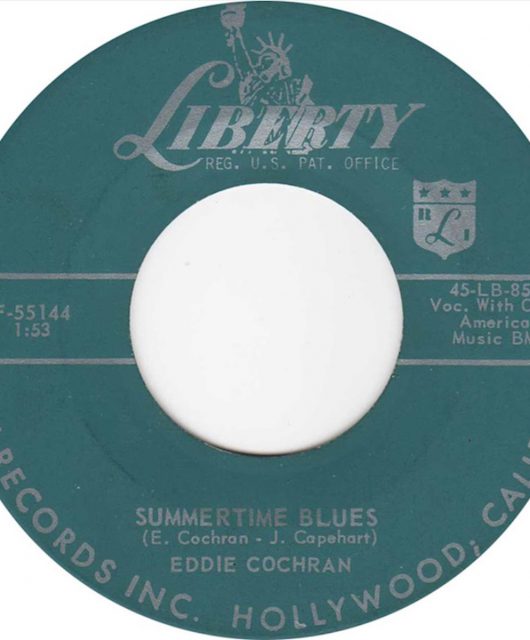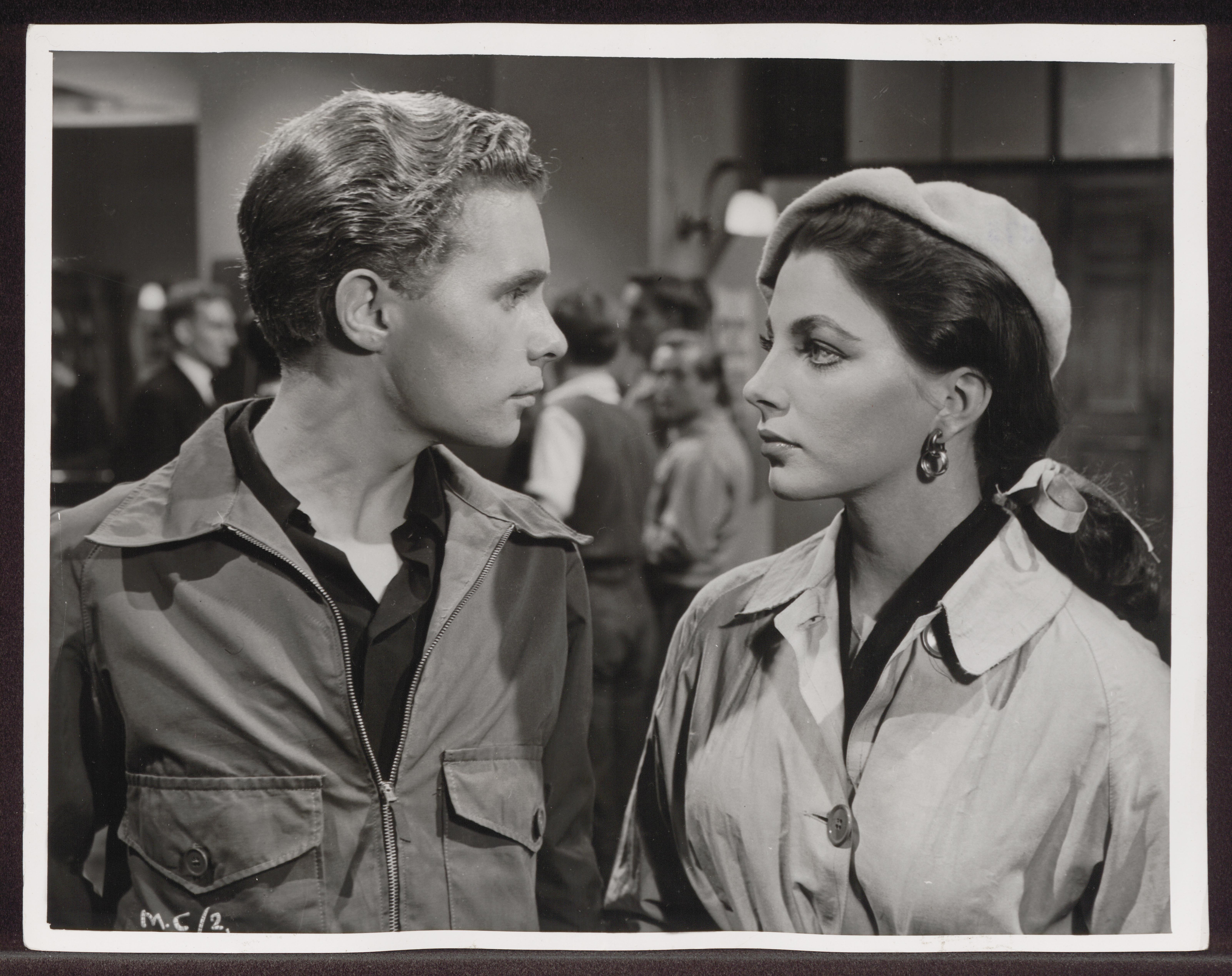Charting the rise of Ricky Nelson and his fellow Teen Angels
When Ricky Nelson’s Poor Little Fool became the first No.1 song on Billboard’s new Hot 100, it appeared to cement the rise of the ‘teen idol’. Here we take a look at the phenomenon which would, for a period, dominate the pop charts
Ever since Elvis Presley first made fans scream in frenzied delight, teenagers have been seduced by the hottest acts to shake planet rock. Two years after the King made No.1 on both Billboard’s Top 100 and Cashbox with Heartbreak Hotel, a concise new hit parade was introduced to show who was top of the pops.
The usual suspects
Billboard delivered its first Hot 100 on 4 August 1958 and many of the usual suspects appeared. Presley was present with two hit singles, as were The Everly Brothers and Chuck Berry, while three was the magic number for Buddy Holly. Other Vintage Rock favourites are littered throughout the chart, including Johnny Cash and recent cover stars Jerry Lee Lewis, Fats Domino and Eddie Cochran.
Importantly, not only did this all-encompassing rundown offer a clear reflection on how pop-pickers would splash their cash, it also seemed to highlight the rising ‘teen idol’ phenomenon.
Aware that the rebellious raw power of rock’n’roll might prove a little too risqué for some god-fearing parents, record labels latched on to a more marketable breed of fresh-faced singer. As the Billboard Hot 100 debuted, the teen idol’s palatable presence couldn’t be ignored. For evidence, you had to look no further than the No.1 spot, where 18-year-old Ricky Nelson sat with Poor Little Fool.
A Teenager’s Romance
Songs such as Be-Bop Baby, Stood Up, I Got A Feeling, and Hello Mary Lou, all have undoubted rock sensibilities and nobody would question the authentic rockabilly beat that the Burnette Brothers, Johnny and Dorsey, brought to tracks such as Believe What You Say, It’s Late and Just A Little Too Much.
However, Nelson was a clean-cut handsome chap with showbiz roots. Starring with his parents on the TV sitcom The Adventures Of Ozzie And Harriet, young Ricky was that upstanding character who could lip-sync a cover of Fats Domino’s R&B hit I’m Walkin’ on the show and get the whole family’s toes a-tappin’. He also knew how to deliver a dreamy ballad, and hits such as A Teenager’s Romance, Sweeter Than You, Young World and Teen Age Idol, were designed to melt a young gal’s heart.
Penned by Cochran’s future beau Sharon Sheeley, when she was a teenager herself, Nelson cut Poor Little Fool after the fledgling songwriter had driven to his Californian home hoping to offer the star her track. After claiming that her car had broken down, the singer came to her assistance and ended up recording the number on 17 April 1958. Released on 23 June, the single spent two weeks at No.1 in the UK.
All-American boy
Nelson would score over 30 Top 40 US hits between 1957 and 1962, more than any other artist except Elvis and Pat Boone.
Perhaps a little older than the conventional teen idol, Boone was 24 when If Dreams Came True and That’s How Much I Love You, landed him at No.7 and 39 on the inaugural Hot 100. Despite his popularity, he’s often ridiculed for sanitised versions of music by Black artists such as Fats Domino and Little Richard. While his interpretations might sound corny today, they proved highly lucrative for the writer and The Georgia Peach even had the good grace to acknowledge that Boone was, “the man who made me a millionaire”.
Given the singer’s bankability at the time, it’s no surprise that Hollywood capitalised on his pulling power and Boone followed Elvis into movies. After enjoying success in pictures such as Mardi Gras, Journey To The Center Of The Earth, and All Hands On Deck, he shared top billing with another idol, Bobby Darin, in 1962 musical State Fair.
Making a splash
Darin’s cool demeanour obviously lent itself to the silver screen. However, he started his career by crafting tracks for Connie Francis. He hit the big time himself as a singer-songwriter after New York DJ Murray The K bet him that he could not make a song that began with the words, “Splish splash, I was takin’ a bath”. Within one hour of the challenge being laid down, Darin had lyrics for Splish Splash, which made No.3 on Billboard’s opening Hot 100.
Guided by Atlantic’s star-maker Ahmet Ertegun, he followed his first foray into rock’n’roll with another smash, Dream Lover, in 1959. Three years later fellow New Yorker and friend, Dion DiMucci, released a version of Dream Lover on his solo album Runaround Sue.
Teenager in love
DiMucci first encountered Darin on a package tour that also featured Buddy Holly and The Coasters. They were offered a spot after Dion & The Belmonts’ breakthrough, I Wonder Why, entered the first Hot 100 at No.47. With The Belmonts, DiMucci scored several US hits including No One Knows, A Teenager In Love and Where Or When, before going on to cement himself as a solo artist with hits such as The Wanderer, Lovers Who Wander, Little Diane, Ruby Baby and the No.1 single Runaround Sue.
The group, also teamed up with Holly for the 1959 Winter Dance Party tour of North America. Following the tragic plane crash which claimed the lives of headliners Holly, Ritchie Valens, and the Big Bopper, Dion & The Belmonts honoured the next engagement in Minnesota, where they were joined by future teen heartthrob Bobby Vee. Despite the devastating circumstances, Vee’s performance helped establish him as one to watch and he’d go on to enjoy hits such as Devil Or Angel, Rubber Ball, The Night Has A Thousand Eyes and chart-topper Take Good Care Of My Baby. Fellow idol alumni Frankie Avalon, Fabian Forte, and Jimmy Clanton were all hired to help The Belmonts complete that fateful tour.
Clanton, who became known as the “swamp pop R&B teenage idol”, was a white kid inspired by the flourishing Black sounds of New Orleans. He rose to fame when His Rockets shot to No.12 in the debut Hot 100 with Just A Dream. Written by the singer with Cosimo Matassa of J&M Recording Studio fame, the single peaked at No.4 and was the first of seven Top 40 hits he’d cut for Ace Records.
Quintessential teen dream
Frankie Avalon, who made No.9 with his naughty and nice Ginger Bread, was the quintessential teen dream. Born in Philadelphia, the singer had not long turned 17 when he took DeDe Dinah to No.7 on the Billboard Top 100. He first topped the chart in 1959 with Venus and it spent five weeks at the summit. He followed it with smash hit singles Bobby Sox To Stockings and Just Ask Your Heart, before returning to the top spot again with Why.
The teen idol turned matinee idol when the daughter of Alan Ladd suggested the singer starred in his 1960 picture Guns Of The Timberland. His performance caught the eye of John Wayne who had previously made Rio Bravo with Ricky Nelson in a supporting role. Hoping Avalon would also attract a youthful audience, he appeared as Smitty in The Alamo.
Matinée idol
After starring in 1963’s Operation Bikini, alongside Tab Hunter (who had a No.1 hit in 1957 with Young Love), he made a string of ‘beach’ musicals with Annette Funicello. Destined to remain a teen idol, even into his late 30s, he appeared in 1978’s Grease as Teen Angel. In the 80s, Avalon performed with fellow Philly pop idols Bobby Rydell and Fabian as The Golden Boys.
Having played with Avalon in Rocco & His Saints, Rydell’s break came when he signed to Cameo-Parkway in January 1959. With high hopes for their hot new talent, label owners Bernie Lowe and Kal Mann penned Kissin’ Time. Released in mid-June, it received airplay on Dick Clark’s American Bandstand and within weeks Rydell was at Billboard No.11. The winning partnership continued with big-hitters such as We Got Love, Wild One, Swingin’ School and Good Time Baby.
Hound-Dog Man
Fabian, discovered in 1957 by Chancellor Records owners Bob Marcucci and Peter De Angelis, first had a minor hit with Pomus and Shuman’s I’m A Man. Following a marketing campaign instigated by Marcucci – a series of ads saying “Fabian is Coming”, “Who is Fabian?” and “Fabian is Here” – his next two releases, Turn Me Loose and Tiger, fared better, charting at No.9 and No.3.
Perhaps not the greatest singer, Fabian also turned to Hollywood and took the lead in Don Siegel’s Hound-Dog Man. Performing five songs in the movie, the title track was released as a single with This Friendly World on the flipside. While both charted at No.9 and No.12, it would be his last noteworthy impact on the Hot 100.
Focussing on film, he starred in a some lighthearted romps before epic war drama, The Longest Day, which also featured singer-songwriter Paul Anka in his first major role. While he had appeared in teen exploitation flicks such as Girls Town, music was Anka’s true calling.
Topping the charts
When the first Hot 100 appeared, an 18-year-old Anka sat at a lowly No.69 with Midnight. Hailing from Ontario, the Canadian recorded his first single, I Confess, when he was 14. The song made no impression, but he didn’t have to wait long before he was auditioning a track he had written called Diana for Don Costa at ABC. Suitably impressed, the song was cut at RCA Studios and made US No.2. Following a string of chart entries, he struck gold again when his self-penned Lonely Boy, reached No.1 for four weeks in 1959. Despite a dip in the 60s, he continued to chart and returned to the top with (You’re) Having My Baby in 1974.
While Anka bounced back from the Beatles-led British Invasion, most of his contemporaries were not so fortunate and, by 1964, the teen idol was sporting a mop top haircut. However, as The Fab Four set about repaying our Stateside cousins for gifting us rock’n’roll, Elvis Presley continued to thrive, racking up over 20 Top 20 hits between 1964 and his passing in 1977. The original pop idol remains as relevant as ever today and for many The King will forever be No.1.
Check out our Brits of Rock’n’Roll Special






